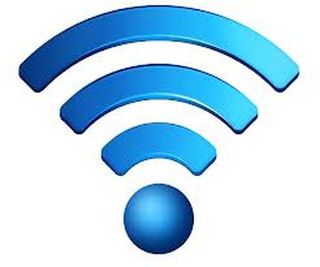WiFi Under The Hood

One of the blessings of digital life is the rise in indoor and outdoor WiFi hot spots, for those moments when you left whatever at home and need to fetch it from somewhere in the cloud. Or any one of dozens of other use cases.
Right now, the CableWiFi service, which gangs together the WiFi hotspots operated by Bright House Networks, Cablevision Systems, Comcast and Time Warner Cable, supports 250,000 wireless spigots; Comcast recently lit up a way to make our homes into hotspots, which will fill in the nation’s WiFi mesh even more over time.
Such developments seem a good occasion to dive into the state of the state of WiFi — usage trends, the extra-spectral headroom and how it stands up against such competing wireless-broadband methods as Long Term Evolution (LTE).
Only 4% of Internet traffic moves over the 600 Megahertz of spectrum used by mobile carriers, according to panelists at the recent SCTE Rocky Mountain Symposium in Denver. WiFi, by contrast, carries more than half of the Internet’s traffic, over a skinnier, 200-MHz spectrum slice.
That’s why the Federal Communications Commission’s decision to allocate 200 MHz of extra WiFi spectrum in the 5-Gigahertz band came as welcome news — the biggest chunk of unlicensed airwaves since 2003, according to dailywireless.org.
Meanwhile, in-home WiFi is showing signs of wear, particularly in homes with lots of connected devices. No longer is signal reach around the home so much of an issue — what was once about 1,000 feet is now 3,000-plus. The bigger issue is the challenge of concurrency — in field terms, the “why doesn’t the 13th tablet work?” issue.
It goes like this: The technician does the install. Everything works great! Except that only Mom was home at the time. Then everyone else comes home and fires up.
In tech talk, this conundrum creates the need for “radio resource management,” abbreviated “RRM,” to shore up wireless-broadband connectivity so that it’s a reliable way to stream multichannel video to the stuff of our digital gardens.
(Still, though, the most customer calls about WiFi remain more basic, panelists noted: How do I set this thing up? What’s my login? What’s my SSID, or Service Set Identifier?)
Ultimately, as cable’s indoor and outdoor WiFi footprint grows, it becomes a more and more plausible way for the industry to (finally!) own a mobile/wireless presence to rival mobile carriers.
Keep an eye, though, on “LTEU,” for Long Term Evolution/Unlicensed. With it, mobile carriers intend to buttress their licensed spectrum with WiFi. It’s early-stage, but it’s coming.
Stumped by gibberish? Visit Leslie Ellis atwww.translation-please.comormultichannel.com/blog.
Multichannel Newsletter
The smarter way to stay on top of the multichannel video marketplace. Sign up below.
